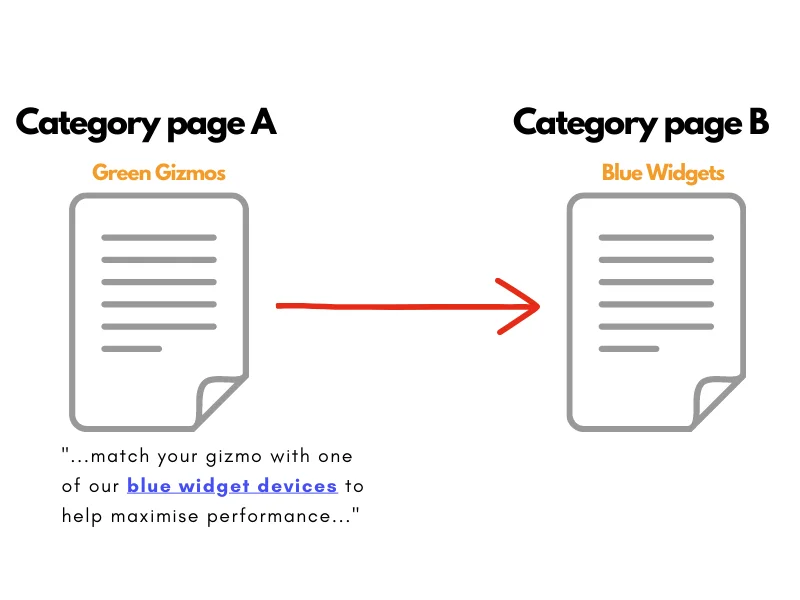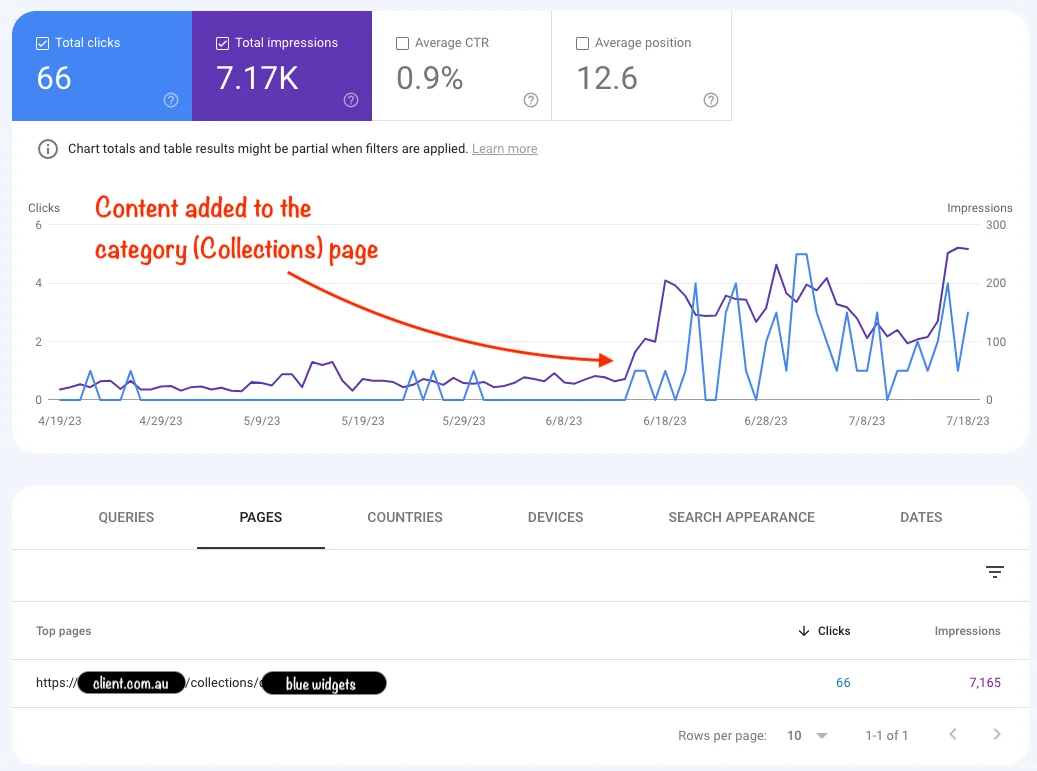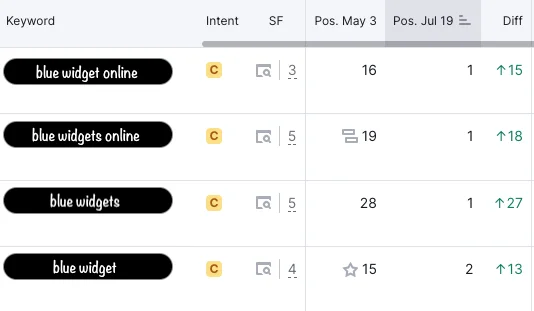Writing content for eCommerce category pages is best practice SEO, but it’s often forgotten about.
When an old client came back on-board, we saw an opportunity to flesh out a key category page with some well-crafted, keyword optimised sales copy.
Note: Our client is a well-established eCommerce brand based in Perth, Western Australia with a website generating significant revenue from multiple channels including paid search, organic, and social.
Because their site runs on Shopify, the category pages are called ‘Collections’.
Our process for writing eCommerce category page content
While we’ve protected our client’s identity, here’s what we did:
1. Decided on the primary keyword we wanted to target by doing some research using the Google Ads Keyword Planner tool.


We can see the keyword [blue widgets] has a lot of monthly searches (12,100) and it has high commerciality – lots of people bidding on this term in Google Ads, basically.
2. Analysed the top three competing pages for [blue widgets], noting down the heading structure and subtopics each competitor covered within the content.
3. Briefed our copywriter to create 300 words of sales copy with the following instructions:
- Think “audience-first; robots, second” to ensure we’re writing for people, not the search engines.
- Use short paragraphs and subheadings to make the content easy to skim and scan.
- Incorporate all the subtopics our competitors are covering, too.
- Fill the gaps by adding more helpful content around the main topic to show Google that we’re value-adding to the search results (FAQs are great for this purpose). For more, see Why Adding Value to Content is Key to Writing Helpful Content.
- Include our client’s advantages and differentiators – this makes it clear to the customer why they should buy from our client instead of a competitor.
4. Uploaded the content to the category page and optimised the metadata (page title, meta description and H1 tag).
5. Audited the page through Surfer to further optimise the content and help us quickly find contextually relevant internal links.
A quick note on internal linking for eCommerce websites
You always want to point some internal links back to your content from contextually relevant pages where it makes sense.
For eCommerce sites, cross-linking between relevant category pages using keyword-rich anchor text is a powerful SEO tactic for two reasons:
1. It helps the user journey and creates opportunities to cross-sell products; and
2. The keywords in your anchor text help Google understand how pages on your site relate to each other.
The graphic below shows keyword-rich anchor text used to link the Green Gizmos page to the Blue Widgets page. The words ‘blue widget devices’ help give users and Google context about the Blue Widgets page.


You can only do this if you flesh the category pages out with content.
Here are the results of adding fresh content to the category page
The following screenshot is from our client’s Google Search Console account.
It shows the sharp rise in organic traffic after we added the category page content:


This next screenshot shows the increase in search visibility (rankings) for the primary keyword and some variants.


Summary
We hope this insight into our process on writing content for eCommerce category pages encourages you to flesh out the categories/collections on your own website.
If you’re looking for some help, we provide strategic SEO services in Perth and right across Australia.
Reach out for a free 30-minute consultation today.




